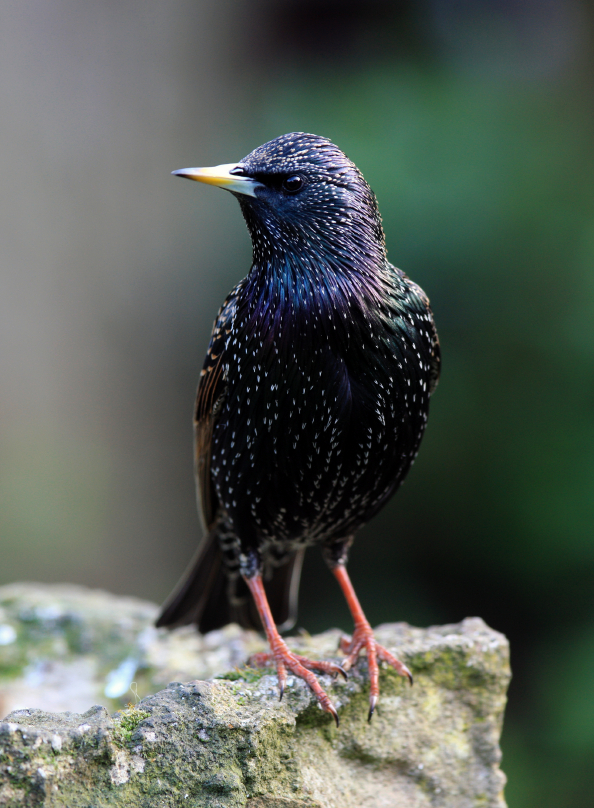Sturnus vulgaris
It’s not nice to fool with Mother Nature! In 1890-91, one hundred European Starlings, brought to the United States from Europe, were released in Central Park in New York City. Today the species’ population is estimated to be 200 million birds and they are found across the continent. What was the reason for the release? So that all the birds mentioned in the works of William Shakespeare would be present in our country! And mind you, the bird got one mention in one line in Henry IV. Today our native cavity-nesting species face stiff competition for nest sites from these frivolously introduced birds.
You may have noticed a change in appearance of starlings visiting your property. When they complete their annual molt in late summer, most of the new feathers on their heads and bodies show white spots, giving them a spotty visage for the winter months. These spots have been worn away by spring and starlings appear uniformily iridescent black until the following molt. Two characteristics differentiate them from other “black” birds. One is bright yellow bill. The other is their stocky, short-tailed shape.
Starlings are opportunists when it comes to food. Diet varies greatly over their range and over the course of the calendar. In other words, they take advantage of whatever food is available. Insects, fruits, berries, grains, and seeds are all consumed. Urban starlings take advantage of refuse and landfills. Rural birds associate with livestock and grain fields. Backyard bird enthusiasts occasionally deal with starlings competing with other songbirds at the feeders. They are particularly attracted to suet.
Starlings are amazing songsters. They mimic sounds heard in their environment. They whistle, warble, chatter, rattle, and trill. If you hear these unbird-like sounds coming from your yard, look for the Shakespearean actors lurking in the trees.
Reference
Cabe, Paul R. 1993. European Starling (Sturnus vulgaris), The Birds of North America Online (A. Poole, Ed.). Ithaca: Cornell Lab of Ornithology.
